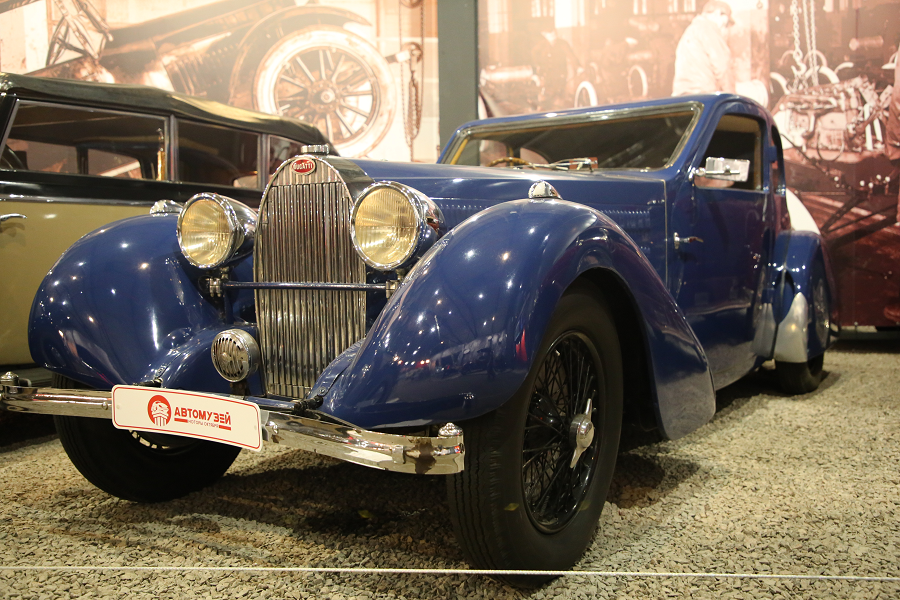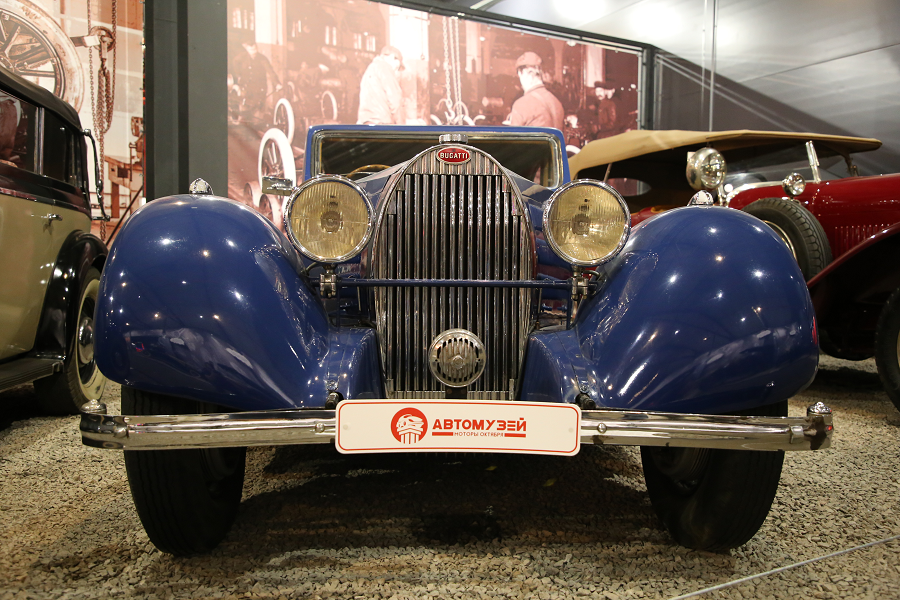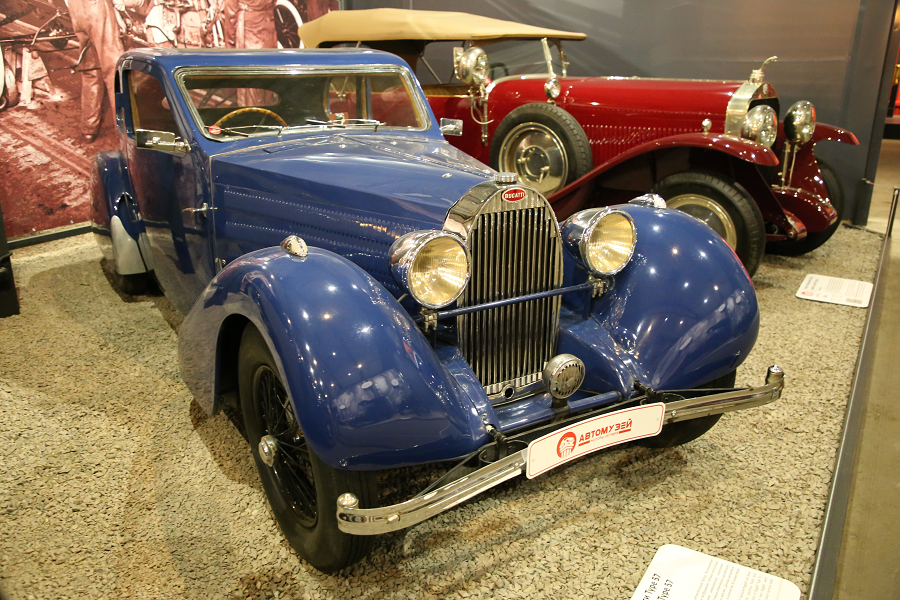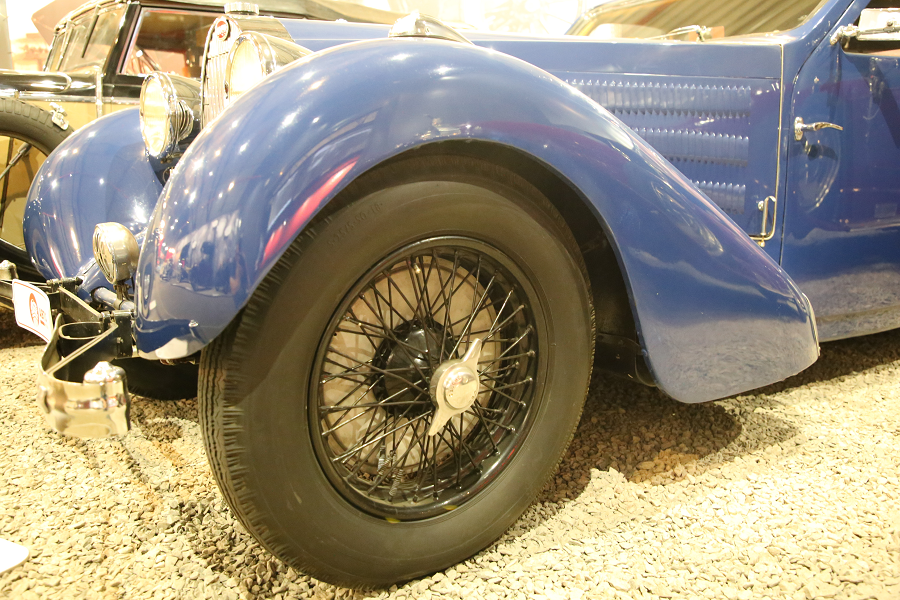Bugatti Type 57. Blue version. 8 cylinders, 3.2 L, 140 HP, 153 km/h in Moscow
The original Type 57 was a touring car model produced from 1934 through 1940. It used the 3.3 L (3,257 cc; 198 cu in) engine from the Type 59 Grand Prix cars, producing 135 hp (100 kW). Top speed was 153 km/h (95 mph).
It rode on a 3,302 mm (130 in) wheelbase and had a 1,349 mm (53 in) wide track. Road-going versions weighed about 950 kg (2,090 lb). Hydraulic brakes replaced the cable-operated units in 1938, a modification Ettore Bugatti hotly contested. 630 examples were produced.
The original road-going Type 57 included a smaller version of the Royale’s square-bottom horseshoe grille. The sides of the engine compartment were covered with thermostatically-controlled shutters. It was a tall car, contrary to the tastes of the time.
Dimensions:
Wheelbase: 3,302 mm (130 in)
Track: 1,349 mm (53 in)
Weight: 950 kg (2,090 lb)
The Bugatti Type 57 and later variants (including the famous Atlantic and Atalante) was a grand tourer car built from 1934 through 1940. It was an entirely new design created by Jean Bugatti, son of founder Ettore. A total of 710 Type 57s were produced.
Type 57s used a twin-cam 3,257 cc engine based on that of the Type 49 but heavily modified by Jean Bugatti, unlike the single cam engines of the Type 49 and earlier models. The engines of the Type 50, 51 used bevel gears at the front of the engine to transmit power from the crankshaft, whereas the Type 57 used a train of spur gears at the rear of the engine, with fiber gear wheels on the camshafts to achieve more silence in operation.
There were two basic variants of the Type 57 car:
The original Type 57
The lowered Type 57S/SC
The Type 57 chassis and engine was revived in 1951 as the Bugatti Type 101. A rediscovered Type 57 sold for 3.4 million euros at auction on 7 February 2009 at a motor show in Paris.

















